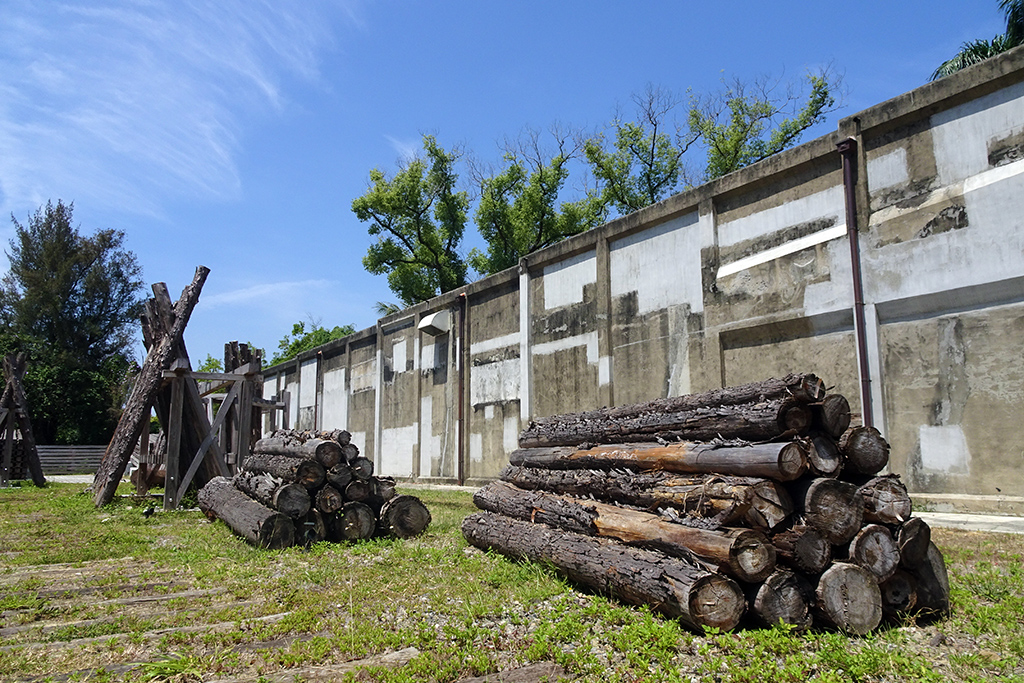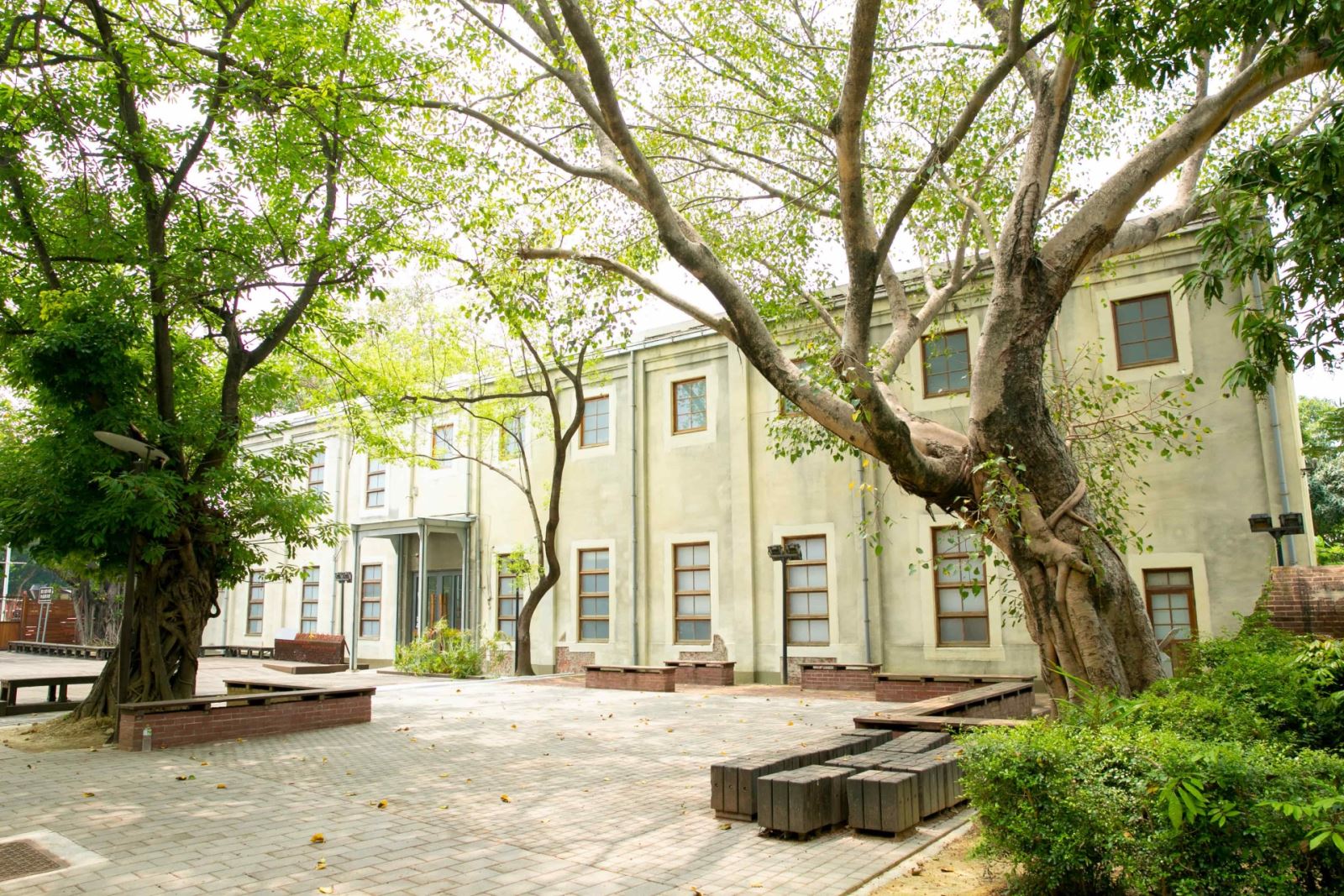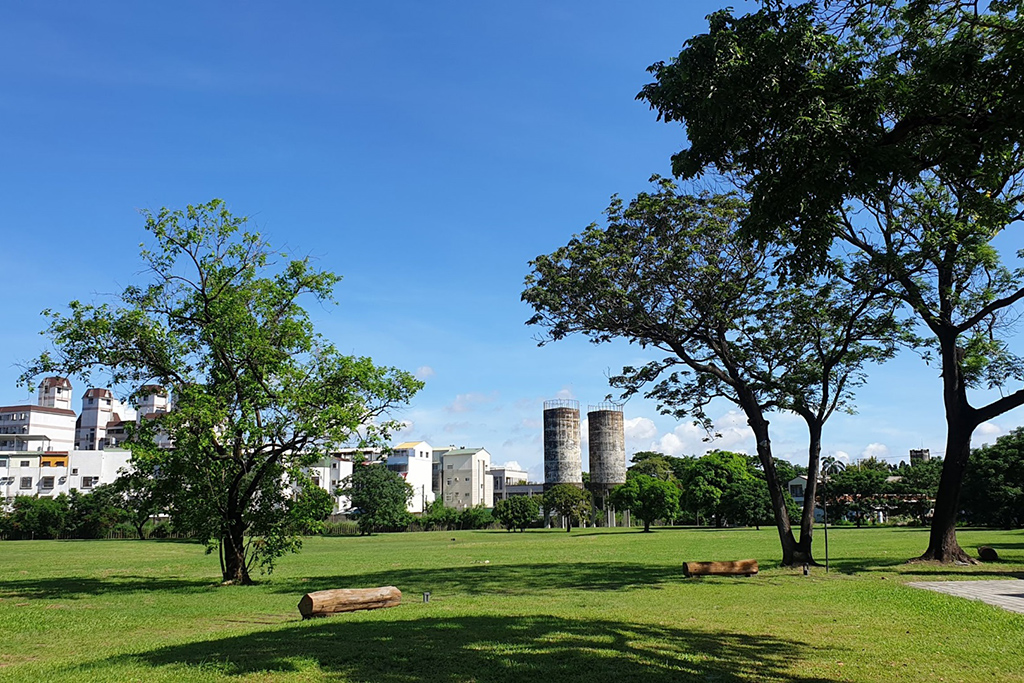It was completed in 1914 and once the most extensive national sawmill of the Japanese Empire. It utilizes the most advanced facility and technology introduced from Europe and America at that time. It was responsible for storing the wood from Alishan and processing woods into "timber". Nowadays, the factory is no longer in operation, but it still preserves many historic buildings and remains, as well as the vast green space that was once a cedar pond. It is a rare cultural and quiet field in Chiayi City.
History of Chiayi Sawmill
-

Sawmill
-

Boiler Room
-

Drying room
-

Chiayi Sawmill
- In 1899, Japanese found out that Alishan is abundant in forest resource. In 1906, the Japanese private enterprise Fujita started to exploit wood resources in Alishan. Because of the shortage of funds, the forest and related wood industry were returned to the state's control. The establishment of Chiayi Sawmill laid on the foundation of the exploitation of Alishan forest.
- The authority began the forestry in May 1912 and finished the construction of the Alishan-Chiayi Railway in December. In 1913, the government started to deliver the timber from Alishan. It also completed the timber yard and Chiayi Sawmill, including the powerhouse, the sawdust room, and the drying room in 1914. From then on, Alishan forest becomes the foundation of Chiayi forestry.
- The government stopped exploitation in 1963. Beimen Station, the Forest Club, the Forest dormitory, and the sawmill all remain in Chiayi City. From 2009, the authority has been devoting itself to "preserve, revitalize and reuse" these historic buildings.
Features of Buildings
- In 2002 the Chiayi City Government announced the sawmill, office, powerhouse, sawdust room, and drying room remained in Chiayi Lumber Mill, which was built during the Japanese colonial period, as "Historic Buildings of Bamboo Crafts Factory."
- The concepts of the revitalization have been drawn up according to the functions and use patterns for forestry industry of each building. The detail table of all the buildings is as follows:
Historic Buildings
Watch the full table
| Buildings |
Characteristics |
Structure |
| Machinery Factory |
The underground power system and the saw-timber machine base in the second-generation sawmill, including transport area, saw-timber area, and sawdust gathering area etc., were the most advanced automation equipment during the Japanese colonial period. With the outer wall buttress on the north side, the large window on the south side, the elevated roof vent in the center, and the large-span structure, the sawmill was the industrial cultural asset left in the early 20th century. |
Wood structure |
| Boiler Room |
It was the first SRC reinforced concrete building used as a thermal power plant in Chiayi City. It mainly provided power for the sawmill at that time, equipped with British steam boiler, American-made generator and other equipment. In 2009, it was renovated as a woodcarving exhibition hall, displaying 47 cedar wood carvings. |
RC |
| Office |
The wall bases were covered by flashings, with walls, in which there were large windows, covered with plaster. In the office there were different oil drums left during the Japanese colonial period. |
Wood structure |
| Drying room |
The drying room, the only dry concrete drying chambers in Taiwan, was complete with a flat square chimney, spandrels between beams and columns, wall vents, and earth floor, and the natural circulation of hot air was used to dry the wood. |
RC |
| Remains of Chimney Flue |
It was the smoke exhaust equipment of the power room. There was a flue made of brick connecting the power room and the chimney. The waste smoke discharged from the combustion chamber of the power room would pass through the flue and out of the chimney. It was 120-feet high and destroyed by Baihe earthquake in 1964, with only some remains left. |
Made of brick |
| Sawdust room |
The slant feed track was connected to the power room, and the sawdust was burned for generating electricity. The upper two slant plates inclined to the middle were supported by columns, without wall around the bottom of the building. |
RC |
| Baking room |
The room was eastward and consisted of four roofs connected with each other, with chimneys on both sides of the roof and water troughs on the ground of both sides outside of the room. |
Wood structure |
| Timber warehouse |
There were lattice windows above the gate and the warehouse was supported by a wooden truss. |
Wood structure |
| Four buildings in Yushan 2nd Village |
It contains special spaces such as vestibule, kitchen, passage, closet, storage and veranda. |
Wood structure |
Non-listed Historic Buildings
Watch the full table
| Buildings |
Characteristics |
Structure |
| Knitting Center |
In 1965, it was rebuilt as the second teaching center for labor education, and has been used as a bamboo handicraft processing factory since 1969. It is a rectangular building, 25 meters long from north to south and 9.3 meters wide from east to west, with large windows for lighting. |
Wood structure |
| Guard room |
The corner of the cornice plate is radial, and the window is U-shaped, with 180-degree viewing angle. |
Wood structure |